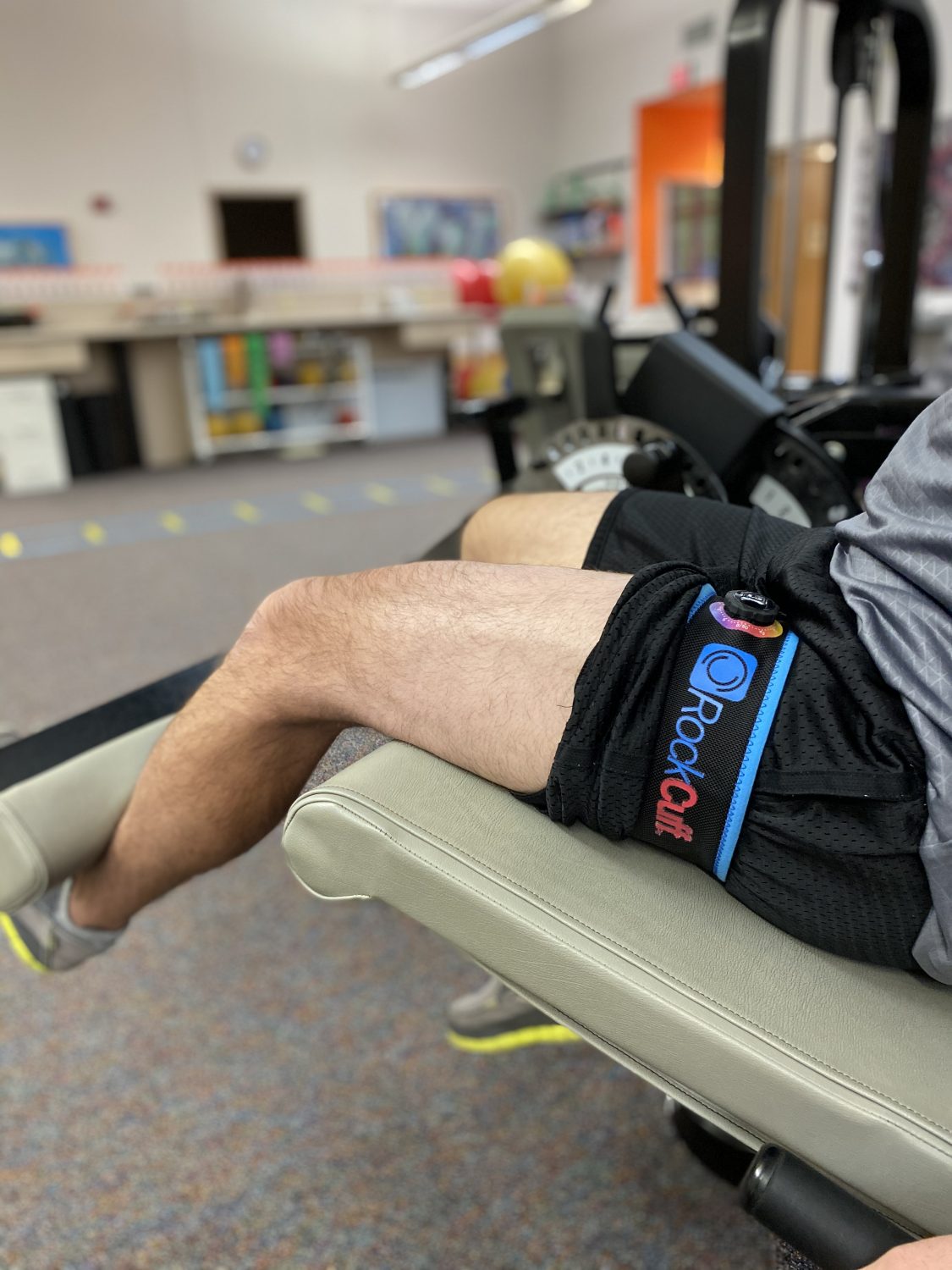
Don’t Fear The Recovery Process! Take Control of It with Blood Flow Restriction Rehabilitation (BFR)
Posted on Nov 05, 2020
Posted in: PT Tips,Specialty Treatments,Sports,Uncategorized
Recovering from a sports-related injury or loss of muscle mass after surgery doesn’t have to be overwhelmingly strenuous on your body with Blood Flow Restriction Rehabilitation! Research has shown that it is possible to strengthen muscle after a time of inactivity with low load training versus the typical assumption that muscular hypertrophy (growth) is only achieved through heavy lifting.
How is that possible?
With Blood Flow Restriction Rehabilitation (BFR)!
Studies have found that patients who are recovering from an injury or surgery benefit from lighter exercises aided by a restrictive agent. The reduction of blood flow stimulates and tricks your muscle into thinking it’s working harder than it really is (smart, right?).
So, how does it work?
Blood Flow Restriction Rehabilitation utilizes light weight exercises with the addition of a tourniquet cuff to stimulate and strengthen your muscle while simultaneously fighting anabolic resistance. Anabolic resistance is defined as “the condition in which a limb in a period of disuse, such as after surgery or injury, reduces protein synthesis specifically within that limb” (Glover 2008). This resistance is often the cause of frustration for many patients. Muscles, in the recovery phase of an injury or post-operation, struggle to combat the dormancy stage they were previously in, leading to slow progress and unsatisfactory results.
The reduction of blood flow to the extremity, along with the movement of the exercise, causes a build up of lactate to occur which has many positive effects on your muscle. After a session of BFR, the accumulation of lactate creates:
- An increase in muscle protein synthesis
- Anabolic muscle growth factors
- An increase in Growth Hormones, Insulin like Growth Factor, and Myogenic Stem Cells
The restricted blood flow induces muscle swelling which leads to the initiation of protein synthesis, thus allowing hypertrophy to occur. Compared to weight training without a tourniquet, BFR manipulates the body’s normal chemical processes associated with muscle growth.
Who does it benefit?
Blood Flow Restriction Rehabilitation is an extremely beneficial choice of therapy for patients recovering from any injury where muscle mass was lost. This could include recovery time for a sports-related injury or even the downtime that occurs after an operation. It is common for people with ACL tears, knee replacements, and rotator cuff injuries to seek this treatment in order to strengthen the muscle for future activity. The low intensity, low weight exercises work to create positive muscle growth without stressing the recovering muscle.
Are there side effects to BFR?
As long as BFR is performed properly and by a certified professional, there should be no substantial or long-lasting effects. Besides some slight bruising or possible tenderness in the area where the tourniquet is applied, no potentially harmful or life-threatening injuries should occur.
What are my next steps?
Don’t wait to seek help in your recovery journey, contact Peak Performance Physical Therapy to learn more about how BFR can benefit you! Muscle recovery IS possible after an injury or surgery, and you can see results sooner than you think. With Blood Flow Restriction Rehabilitation (BFR), muscle growth and strengthening can be initiated with low weight exercises and a tourniquet system to ensure your muscles are returned to the strongest, healthiest condition achievable without the risk of further injury.